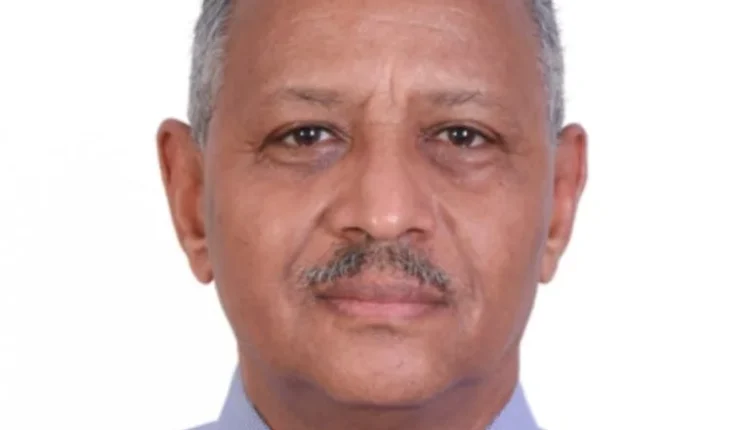The Story of the RSF Militia From the Perspective of the FFC

By: Obaid Ahmed Morawih
On the morning of Saturday, mid-April 2023, after a long Ramadan night, the residents of Khartoum State awoke to the sounds of weapons echoing in their ears. Most had never before heard the sounds of rocket launchers, dual-purpose guns, or warplanes. They turned to the Omdurman Radio dial to find out what was happening — only to find silence. They looked to Sudan TV, only to find it off the air. They frantically flicked through satellite TV channels seeking news about their country, and there it was — war — the very thing they had long hoped would never happen, now erupting violently over their heads, indeed, across the length and breadth of the country.
The Sudanese army garrisons in Khartoum State and in towns and state capitals across Sudan came under heavy, coordinated attack by their “partners” in the Rapid Support Forces (RSF), aiming to seize control.
Alongside this direct military assault and the desperate attempts to seize control of the General Command of the Armed Forces and other key installations — such as the Armoured Corps, Ammunition Corps, Signal Corps, and Wadi Sayyidna — another “battle” was unfolding. One which few people have seen in detail until now — a story we attempt to tell here briefly from the perspective of its true protagonists.
As you wiped the sleep from your eyes, someone would knock on your door — sometimes barging in without permission — and demand: “Where is so-and-so?” Without waiting for a reply, they would storm into rooms, weapons drawn, ordering the head of the household or his son to drop what they were holding, raise their hands, and climb into a pickup truck or Land Cruiser parked outside. The rest of the family would be left in confusion. If you resisted or protested, you might be beaten, humiliated, thrown into the back of the truck like livestock — or worse, left bleeding to death in front of your children.
This wasn’t just the conduct of one of the “warring parties” in the early hours of the war — it became the dominant pattern over the course of an entire year or more, carried out by one side. And it didn’t matter if you were an Islamist or a member of the “former regime” — your mere service at any point in the armed forces, police, or security services was enough. Even having a photo in your home of Field Marshal Ibrahim Abboud, Jaafar Nimeiri, Swareddahab, or Omar al-Bashir — or any relative who served in uniform, even in the civil defence — would brand you as belonging to the “State of 1956”, and thus worthy of forced abduction and disappearance into mass detention camps. No one — not your family nor so-called “human rights” organisations, national or international — would know your fate.
Thousands were abducted from their homes — people who had nothing to do with the war that erupted due to a failed coup attempt and the attempt to impose the Framework Agreement by force. However, they were suddenly — and miraculously — branded as one of the “warring parties” in the narrative pushed by supporters of the Framework Agreement and implemented by the RSF from the very first day. The justification offered for throwing thousands of innocent people into secret detention centres was that they might one day contribute to popular resistance against the enforced agreement.
In those hiding places scattered across Khartoum State and other towns — RSF-controlled camps, former Operation Authority bases, elite neighbourhood buildings, and even schools — thousands of Sudanese were taken and held. They were subjected to the worst forms of abuse by forces that claim to bring democracy and end marginalisation. They went months and years without treatment, food, or even water — interrogated, cursed, but never afforded a trial, not even a customary one.
No rights group or trade union, local or international, adopted their cause or advocated on their behalf — not even with the same passion that was once stirred by women’s clothing issues. The only news that reached the public came from ransom negotiations with their families, through which the kidnapped were sometimes released — those who were detained for financial extortion. But if the suspicion was that you might be a “spy” for the army, you would disappear indefinitely.
In Soba prison and the “prisons” of Riyadh, Taif, Salha, and in Wad Madani, Rufaa and elsewhere — wherever the RSF entered — thousands of Sudanese perished from hunger, thirst, illness, and deliberate neglect. Others died from sheer cruelty. They were buried in mass graves or left for insects to devour them without even informing their families. It was only after the Sudanese Armed Forces regained control over Khartoum’s districts that the true scale of the disaster began to emerge.
When the army entered Jebel Aulia garrison, we saw — via the media — skeletons covered in human skin. From those who could still speak, we learned they were held in RSF prisons, and that many of their fellow detainees had perished. In Salha, Omdurman, it was discovered that over 600 kidnapped detainees had been held — but only one-sixth survived; hundreds had died in a war they never chose.
Each day reveals new crimes by the RSF — kidnapping, forced disappearance, torture, murder, rape — committed against thousands of civilians. And when we examine the narratives being pushed to justify these crimes, we find it is originally the Forces for Freedom and Change (FFC) logic, repeated verbatim by RSF spokespeople and allied political forces — the very ones who seduced the RSF into their power grab project. Their logic is this: tens of thousands of Sudanese citizens who were dragged into detention camps don’t deserve to live, let alone enjoy “democracy and civilian rule”. Like it or not, they were labelled as a “warring party”.
Shortlink: https://sudanhorizon.com/?p=5921

